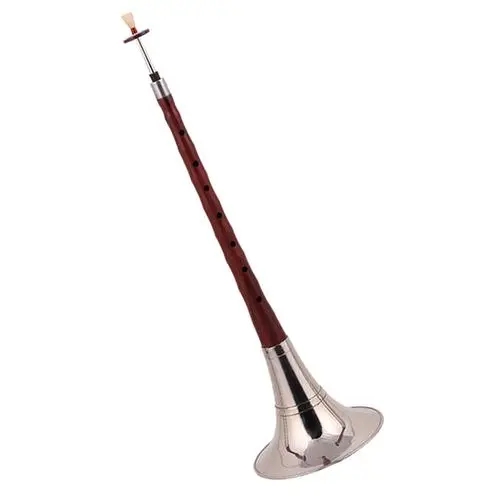Suona playing skills knowledge - Zhou Jiaban's suona playing skills sharing
The older generation of Zhou Jiaban suona artists are all self-made. According to the words of Zhou Jiaban suona playing artists: "You can blow suona thoroughly only after you have figured out the suona." The bowl is made up of 5 parts. In the past, it was called differently in different places, such as "trumpet", "big flute", "sea flute", "di na" and "wooliwa", etc. It is mainly used for weddings, funerals and festivals in rural areas Folklore activities. Most of the repertoires played are based on folk songs, local operas, folk ditties and drama cards. Therefore, Zhoujiaban suona has a strong local flavor and folk flavor, and is deeply loved by the masses. Next, on the knowledge of suona playing skills, Zhoujiaban and Everyone share.

Suona's wake-up whistle and audition
Zhoujiaban suona artist soaks the whistle surface with their mouths (that is, dipping the whistle), then presses the tip of the tongue against the whistle, and uses the mouth to suck (that is, whistle), so that the closed reed opening will vibrate the whistle by blowing a straight air stream. Face, at this time, if the whistle is still small, you can smack again. This process of making the reed sound normal by dipping and smacking the whistle is called whistling. After the whistle is woken up correctly, the suona is auditioned to perform a walk (playing) that is not constrained by rhythm, speed, treble and melody.
The training and holding of the Zhoujiaban Suona is very important to the posture requirements of beginners. The correct posture is to stand or sit, with the legs naturally separated, the chest naturally raised, the suona in both hands, and the arms naturally raised (the elbow joint is slightly lower than the suona) in front of the chest (slightly inclined downward), the eyes Look up and use your dantian to lift your breath. This is a standard posture, but in the lively and colorful folk original ecological performance, the real state is unrestrained, and the music is born from the heart.
Fingering and Fingering Application
Generally, the first, second, third and fourth sound holes are pressed by the little finger (first finger belly), ring finger, middle finger and index finger (between the first and second finger belly) of the right hand. The fifth, sixth, seventh and eighth holes are pressed by the ring finger, middle finger, thumb and index finger of the left hand. The hands are naturally relaxed (the holes should be pressed tightly at this time), the fingertips are slightly inclined towards the bowl, and the backs of the fingers and palms are slightly inclined towards the face. The thumb of the right hand is naturally placed under the rod and opposite the middle finger, and the little finger of the left hand is naturally suspended beside the ring finger. The fingering of suona is usually called by the fingering of what sound it makes. The top tone (ie the seventh and eighth tone holes) is used, but sometimes due to the requirements of the music and the convenience of fingering, the drum tone and the first hole tone can also be used.
Mouth and mouth use
Usually, the corners of the two mouths are drawn back, the upper and lower chakra muscles are close to the gums, and the lips are tightened and slightly wrapped around the tips of the teeth to hold the whistle. Generally, the depth of the whistle should not exceed the whistle seat (to give full play to the control ability of the lip muscle on the reed), and it will be in a smiling state. For beginners, the change of mouth shape should not be used too hastily, and it should be used after the mouth shape is stable.
The breathing of suona is the foundation of playing. Only by mastering the correct breathing method can the player's fatigue be relieved and the playing level continuously improved.
There are three breathing methods: 1. Chest breathing: that is, the expansion and contraction of the chest wall. This breathing method is difficult to control due to the diaphragm cannot participate in exercise, the breath is not well controlled during playing, and the pronunciation lacks elasticity and strength, which is easy to cause dizziness Pain, backache and other adverse symptoms. 2. Abdominal breathing: It mainly relies on the movement of the diaphragm. When inhaling, the waist and abdomen expands around; when exhaling, the abdomen gradually contracts. This method is easy to control during continuous rapid ejection and rapid ventilation, but the expiratory volume is still insufficient due to the lack of chest wall operation. 3. Mixed thoracic and abdominal breathing: It is the best way to combine abdominal breathing and thoracic breathing to give full play to the exercise capacity of the diaphragm, thoracic cavity and lungs. When inhaling, the chest, abdomen and waist expand to the surrounding at the same time; when exhaling, the waist and abdomen should support the state after inhalation. Eager to breathe.
 渝公网安备 50010702504639号
渝公网安备 50010702504639号